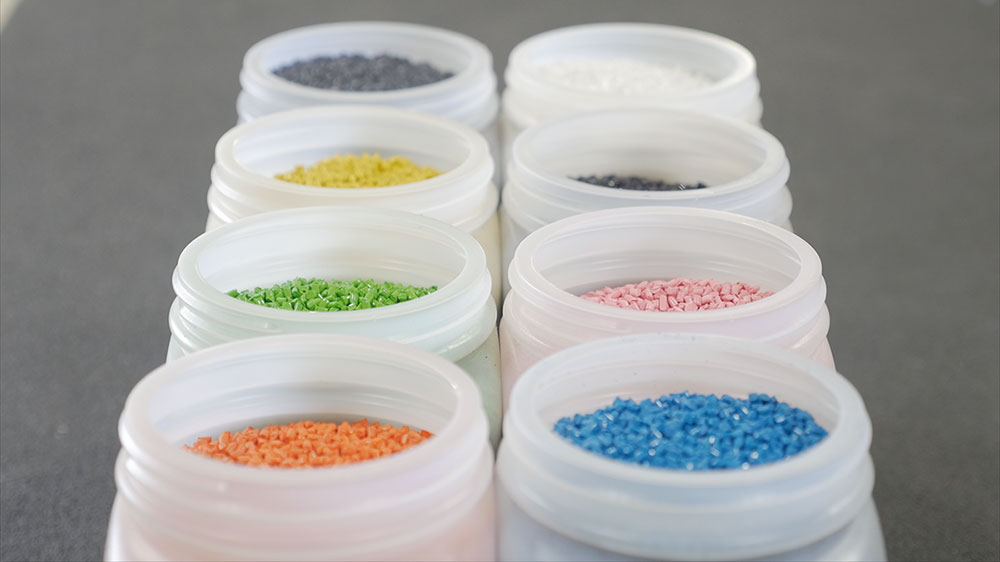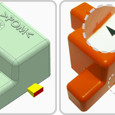
Basketball players who can’t miss a shot might say they’re in the zone. One psychologist described that phenomenon—finding flow—as a state of productive engagement often said to be the secret of happiness.
Finding flow lines in injection molded parts, however, will result in unhappy design engineers and customers. That’s especially true when flow lines are visible on parts for medical devices, automotive applications, or consumer products, industries that rely heavily on injection molding.
Flow lines are surface irregularities, wavy patterns, or a rippled effect, perhaps of a slightly different color, that can appear in injection molded parts.
The good news is that flow lines are only an aesthetic concern and do not affect the strength or structural integrity of a part, which will perform as intended.
Even better, designers and the manufacturers producing their parts have ways to reduce flow lines and achieve their goal of creating high-quality plastic parts.

Going with the Flow
Before discussing those design and other considerations, remember that plastic injection molding is a manufacturing process that involves heating resin pellets to a molten state and, according to digital instructions programmed into the computer that drives the molding process, injecting that molten material into a metal tool (the mold). Once cooled, you have a final production-grade thermoplastic part.
During the injection molding process, flow lines most often result when liquid, molten plastic flowing through the mold comes into contact with plastic material that already has cooled off.
That’s more likely to occur when hot plastic flows from areas of the mold with thicker walls to those with thinner ones, where the plastic already has cooled and become gummy. Uniform wall thickness can help ensure a proper material flow rate so that plastic in thin areas isn’t cooling off before it fully fills thicker sections.
Because some parts can’t have the same thickness throughout, gradual—rather than drastic—changes between thick- and thin-walled areas will help avoid differences in material flow that can cause flow lines. Protolabs’ design for manufacturing (DFM) analysis automatically highlights thin and thick areas in your CAD model, which can serve to initiate discussions on ways to decrease those variances.
Another way to keep molten plastic going with the flow is to avoid sharp inside corners, those with 90-degree edges, in your mold design. It’s better to design corners like a smooth bend in a river. The plastic will easily round corners, following the radii in those curves to fill the mold more evenly.
Some customers add ribs or thin vertical walls to their design, basically creating a skeleton within the part, to increase the structural integrity of injection molded parts. Ribs placed throughout a part also can serve as flow channels to help the plastic go from one side to the other faster and easier.

Smooth mixing of custom colorants is also important to avoid flow lines in molded parts.
Choosing Materials to Improve Resin Flow
Each plastic performs somewhat differently in the injection molding process. Those with lower melt temperatures and lower viscosity, such as polyethylene and polypropylene, flow easily and will fill molds more smoothly and evenly.
Others, like polycarbonates, are sticky and would be a poor choice for thin parts because of the difficult in getting them to fill a mold properly. ABS thermoplastics are in the middle and work for some applications.
Plastics, however, aren’t interchangeable. Some parts need to be strong or flexible while others may require impact- or chemical-resistance. With the wide variety of plastics available today, another material in the same family with a better melt flow rate or viscosity may be an option to avoid flow lines and produce a better part.
Avoiding Flow Lines Before Production
Expert molding team members can process out flow lines and other issues before producing customer parts from a new mold. Operators can adjust several parameters on the device to reduce flow lines. Those include increasing the injection speed of the material going into the part, raising the temperature of the material, or turning up the fill pressure. Before your resin hits the mold, Protolabs’ digital mold flow simulation can identify when changing the thickness of a part or the type of plastic used would improve material flow in the mold and allow production at safe pressure levels.
A digital manufacturer such as Protolabs can produce final parts in as fast as one day using cost-effective aluminum tooling for injection molded parts, with a cost-saving option to move from prototyping to on-demand manufacturing. A quote with free design analysis of a part is available within hours.








